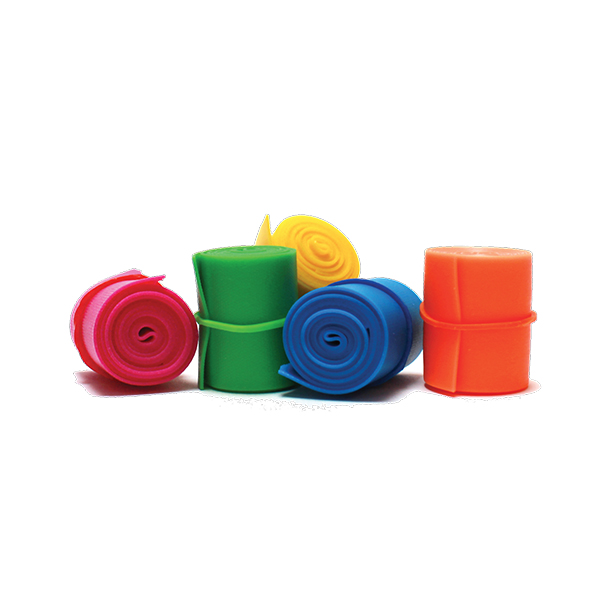Recent changes from the Centers for Medicare and Medicaid Services implemented changes to help reduce healthcare-acquired infections (HAIs). Among these changes was a requirement for hospital-wide infection prevention controls.
HAIs are a major issue for healthcare facilities. As a matter of fact, the Centers for Disease Control and Prevention report that on any given day, about 1 in 31 hospital patients has at least one infection. In 2015, about 72,000 acute care hospital patients with HAI infections died during their hospitalizations1.
It is crucial to limit these infections because patient safety is the most important aspect of care. As a purchaser or a member of a value analysis team, you may have the tools to empower clinicians to reduce infections, improve clinical outcomes and drive down the total cost of care. By accomplishing those ends, you will position yourself as a cost-saving hero and reduce the rising cost of readmissions.
Empower Clinicians to Reduce Infections
Sometimes healthcare feels like the wild west. Your clinicians ride out to treat patients with nothing more than their gumption, wits and the supplies strapped to their trusty mount. With a limited selection of tools available, each choice matters. Every item has a purpose. When making such an important choice, is it better to have reusable supplies or single-use items?
As a Joint Commission-accredited hospital, you have access to sterilization facilities. Why not buy all reusable items? Wouldn’t that be the cheapest way to buy supplies? Not so fast, partner.
Firstly, single-use or disposable items can help prevent HAI infections. When you only use a supply once, you minimize the chances of transmitting bacteria or pathogens to other patients. Let’s look at phlebotomy tourniquets, since they are often available as a reusable or disposable medical supply.

Start with the base cost of each. For disposable items, the cost is the same for each blood draw. For reusable options, consider the base price, the band’s overall lifetime and the cost of sterilizing the tourniquet after each use.
Reusable phlebotomy tourniquets are a good example because they can potentially lead to HAI infections if they are not properly cleaned and sterilized between uses. Blood and other body fluids can hold bacteria or other harmful pathogens that could be transmitted to other patients.
Next, consider the cost associated with every item you sterilize. By working with your central sterilization department, you can find the most cost-effective way to source potential single-use items.
Improve Clinical Outcomes
While it’s easy to compare the base cost of reusable and disposable supplies, it’s important to keep in mind the added costs of sterilization. By finding the total cost of both options, you can decide which choice delivers the best care at the lowest total cost.
Total Cost of Sterilization
Depending on whether your facility uses an autoclaving machine or chemical sterilization, there is either a significant capital investment or recurring cost for chemicals.
The exact cost of sterilizing medical supplies like phlebotomy tourniquets depends on the type of sterilization method used, the equipment and chemicals used in the process and the size and complexity of the materials.
If your facility uses autoclaving, or high-pressure steam, it can take 20-30 minutes to sterilize a load. Once again, the exact amount of time is determined by the supplies’ size and material, the autoclave’s temperature and the load size. When a facility uses chemicals, it can take 15-30 minutes, depending on the product.
Many items in your hospital are sterilized to help prevent the spread of infection, including surgical equipment, endoscopic equipment, dental instruments, implants, prosthetics, respiratory therapy equipment and lab equipment. It’s a good idea to identify efficiencies and check on capacity with your central sterilization department.
In addition to the initial costs for your sterilization process, there is regular maintenance of equipment and protocols to consider. Make sure you weigh the total cost of sterilization against the cost of purchasing single-use supplies and the potential cost of an HAI outbreak. A single infection can cause significant medical expenses, prolonged hospital stays, lower productivity and possibly legal action.
One-Size-Fits-All vs. Flexible Options
You have a lot to consider when you factor in sterilization. To make the equation even more complicated, consider how the supplies are used. To go back to tourniquets, reusable bands are all the same size to accommodate as many patients as possible. If your facility draws blood from a wide range of patients, from pediatrics to bariatric patients, you may want to consider specialty sizes.
When you use disposable supplies, you cut the need to visually inspect items like phlebotomy tourniquets. This in turn empowers clinicians to focus on patient care. To ensure you are improving clinical outcomes, it’s important to listen to the clinical input on your value analysis team.
Drive Down the Cost of Care
We know it can be frustrating to look for new solutions when your current supplies work just fine. With that in mind, consider your patient satisfaction scores and readmission rates. If there is room for improvement, disposable medical supplies can be part of the solution.
Your entire value analysis team is under pressure to find the lowest-priced supplies. How do you improve the quality of care while driving down the price? Reducing HAI infections helps meet both goals.
Here are three steps to get started:
- Talk with central sterilizing – find out which items are either lower priority for sterilization or take more time. This gives you a baseline to find single-use alternatives.
- Request samples – find the best options for single-use alternatives and we’ll send you free samples to test in the field.
- Gather clinical feedback – check with your clinicians to see if single-use products deliver better results.
Caresfield is here to help! We supply single-use specimen collection products to thousands of hospitals. Caresfield offers disposable phlebotomy tourniquets, gloves, lab coats and other single-use items to help your clinicians deliver outstanding care. Check out our disposable phlebotomy tourniquets.
When paired with proper hand hygiene, isolation precautions and general cleanliness, disposable items may help reduce the risk of HAI infections, empower clinicians to deliver the best care and drive down the overall cost of care. When there is only so much room in the saddlebags, make sure your clinicians have the best tools as they ride off into the sunset.
Sources
- Data Portal, Centers for Disease Control and Prevention, https://www.cdc.gov/hai/data/portal/index.html, accessed Jan. 20, 2023.



